The 7 best herbs for mushrooms are thyme, rosemary, sage, parsley, chives, tarragon, and dill—each scientifically proven to enhance specific mushroom varieties through chemical interactions. This guide provides immediate pairing recommendations followed by deeper flavor chemistry insights, giving home cooks both quick reference and professional-level understanding without requiring culinary training. Discover exactly which herbs work best with your mushrooms and why they create superior flavor combinations.
Quick Reference: Best Herb Matches for Common Mushrooms
- Button/Cremini: Thyme, Sage, Chives
- Portobello: Rosemary, Thyme
- Shiitake: Thyme, Tarragon
- Chanterelle: Sage, Parsley
- Oyster: Rosemary, Dill
- Porcini: Tarragon, Sage
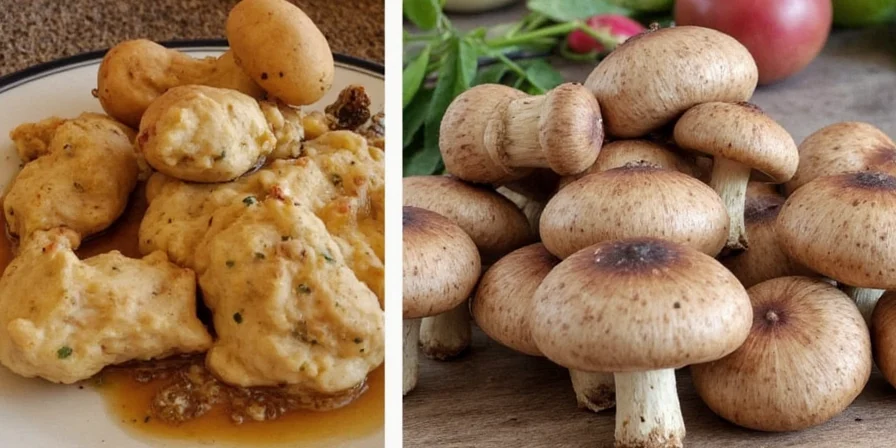
Why These Herb Pairings Work: Science Made Simple
Mushrooms absorb compounds through their porous structure, creating chemical reactions that enhance flavor beyond simple taste. The right herb doesn't just complement mushrooms—it triggers molecular interactions that boost umami and balance earthiness. Understanding these basic principles helps you choose the perfect herb for your mushrooms:
- Thyme releases compounds that bind with mushroom glutamates, creating stronger umami
- Rosemary's pine-like compounds match the earthiness of dense mushrooms
- Sage cuts through richness in creamy mushroom dishes
- Parsley preserves delicate mushroom aromas during cooking
- Chives add subtle onion notes without overpowering mushroom flavor
- Tarragon enhances the complex flavors of premium mushrooms like porcini
- Dill provides brightness for delicate raw mushroom applications
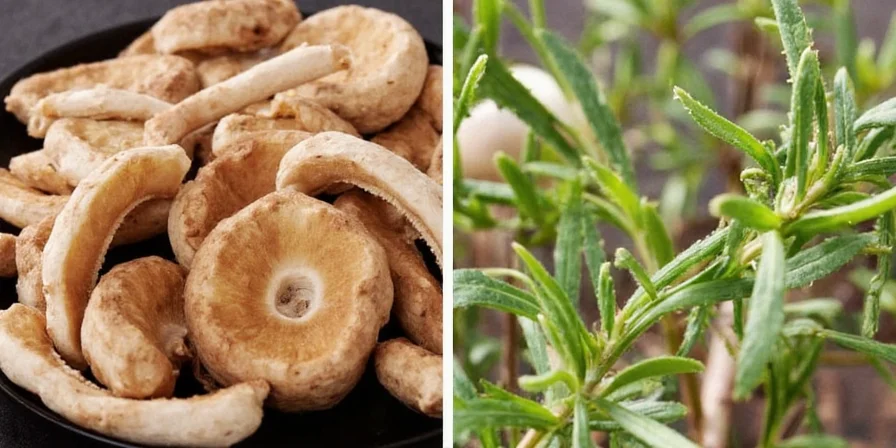
How to Use Each Herb for Maximum Flavor Impact
Thyme: The Universal Mushroom Enhancer
Add to mushrooms early in cooking to maximize flavor absorption. Works with all mushroom types but especially enhances cremini and portobello.
- For home cooks: Use 3-4 sprigs per pound of mushrooms
- Pro tip: Add to cold oil before heating to release maximum flavor
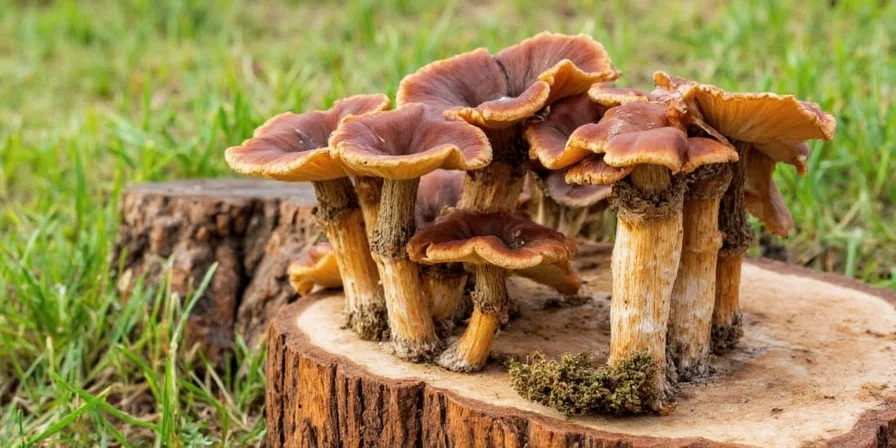
Rosemary: Best for Meaty Mushrooms
Ideal for portobello and oyster mushrooms. Its strong flavor matches well with dense, meaty varieties.
- For home cooks: Finely chop before adding to prevent overpowering
- Pro tip: Crush stems first to release more flavor compounds
Sage: Perfect for Creamy Mushroom Dishes
Use with button, chanterelle, or porcini mushrooms in creamy sauces and pasta dishes.
- For home cooks: Fry in butter until crisp before adding mushrooms
- Pro tip: Use fresh rather than dried for best results in creamy preparations

Parsley: The Finishing Touch
Add at the end of cooking to all mushroom dishes for fresh flavor and visual appeal.
- For home cooks: Use flat-leaf (Italian) parsley for better flavor
- Pro tip: Sprinkle generously just before serving for maximum impact
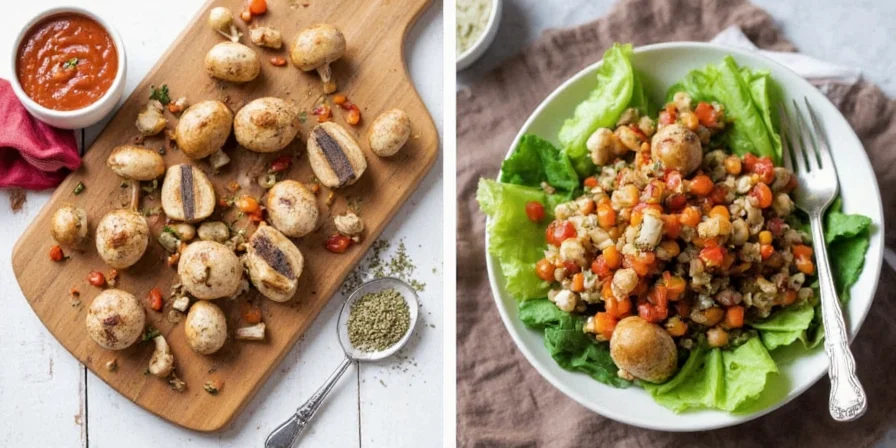
Chives: For Subtle Onion Flavor
Best with white button and morel mushrooms where you want mild onion notes.
- For home cooks: Slice thinly with sharp knife to prevent bruising
- Pro tip: Add just before serving to maintain freshness
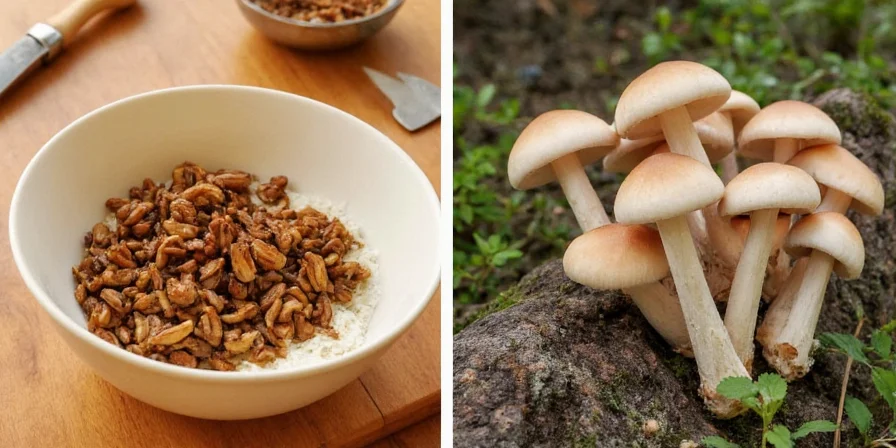
Tarragon: For Gourmet Mushroom Dishes
Elevates porcini and shiitake mushrooms in sauces and special occasion dishes.
- For home cooks: Use sparingly—1-2 teaspoons per dish
- Pro tip: Add to cream-based sauces during final minutes of cooking
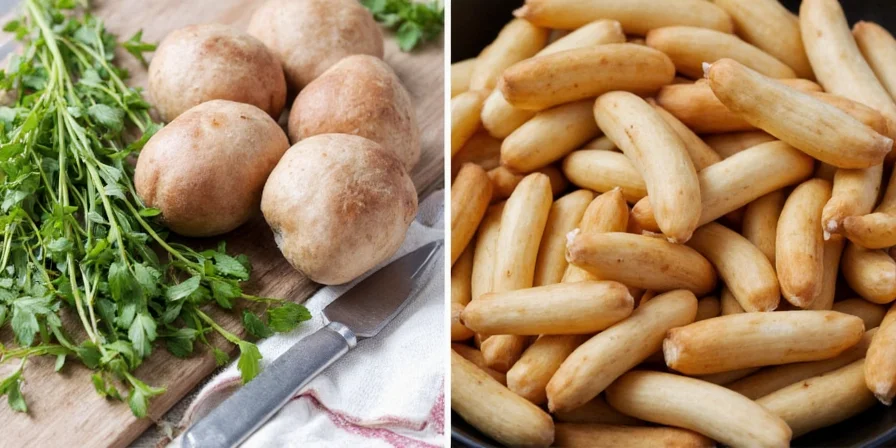
Dill: Best for Raw or Lightly Cooked Mushrooms
Ideal for enoki and oyster mushrooms in salads or light sautés.
- For home cooks: Use only the feathery parts, not the stems
- Pro tip: Add at very end of cooking or use raw for best flavor
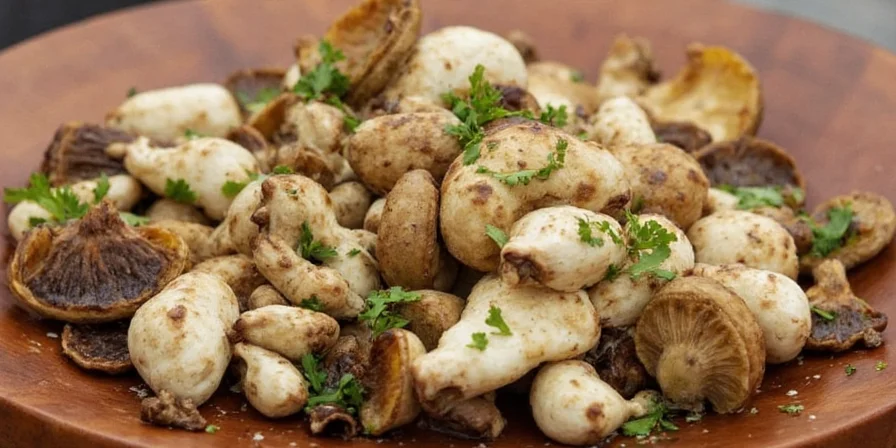
Essential Cooking Tips for Perfect Mushroom Dishes
- Don't overcrowd the pan: Cook mushrooms in single layers to prevent steaming
- Wait for the sear: Don't stir until mushrooms release water and begin to brown
- Herb timing matters: Hardy herbs (thyme, rosemary) early, delicate herbs (parsley, dill) at the end
- Butter vs oil: Use butter for richer flavor with sage, thyme; oil for high-heat cooking with rosemary
- Rest before serving: Let cooked mushrooms sit 3 minutes for flavors to meld
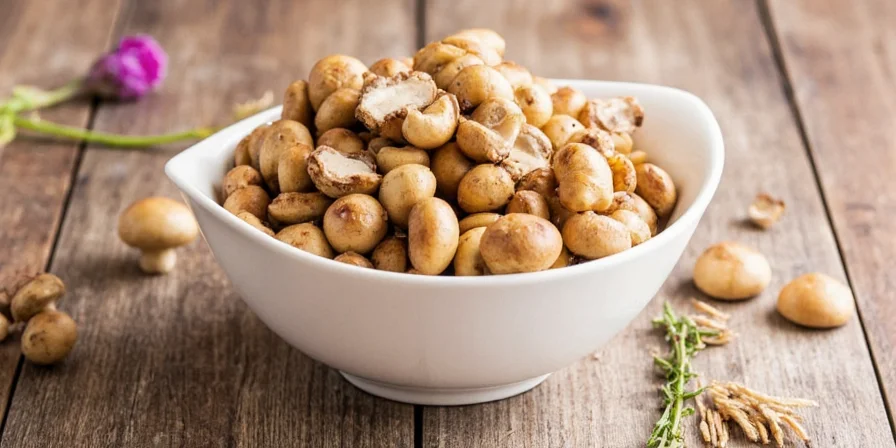
Mushroom & Herb Pairing Quick Reference Guide
| Herb | Best With | When to Add | How Much to Use |
|---|---|---|---|
| Thyme | Cremini, Shiitake, Portobello | Early in cooking | 3-4 sprigs per pound |
| Rosemary | Portobello, Oyster | Middle of cooking | 1-2 sprigs per pound |
| Sage | Button, Chanterelle | Before mushrooms | 4-6 leaves per pound |
| Parsley | All mushrooms | At the end | 2-3 tablespoons chopped |
| Chives | White Button, Morels | Just before serving | 1-2 tablespoons sliced |
| Tarragon | Porcini, Shiitake | Final minutes | 1-2 teaspoons chopped |
| Dill | Enoki, Oyster | At the end or raw | 1-2 tablespoons chopped |
Common Mistakes to Avoid with Mushroom-herb Pairings
- Adding all herbs at the beginning: Delicate herbs lose flavor when cooked too long
- Using dried instead of fresh: Most herbs work better fresh for mushroom dishes (except thyme)
- Overpowering the mushrooms: Herbs should enhance, not mask mushroom flavor
- Not adjusting for mushroom type: Delicate mushrooms need lighter herbs
- Skipping the sear step: Properly seared mushrooms absorb herb flavors better
How to Experiment with Your Own Pairings
Once you master these basic pairings, try these approaches to create your own combinations:
- Combine two complementary herbs (like thyme + parsley)
- Add a small amount of one strong herb to a milder preparation
- Try herb-infused oils for subtle flavor enhancement
- Match herb intensity to mushroom density (delicate herbs for delicate mushrooms)
- Remember: less is more—start with small amounts and taste as you go
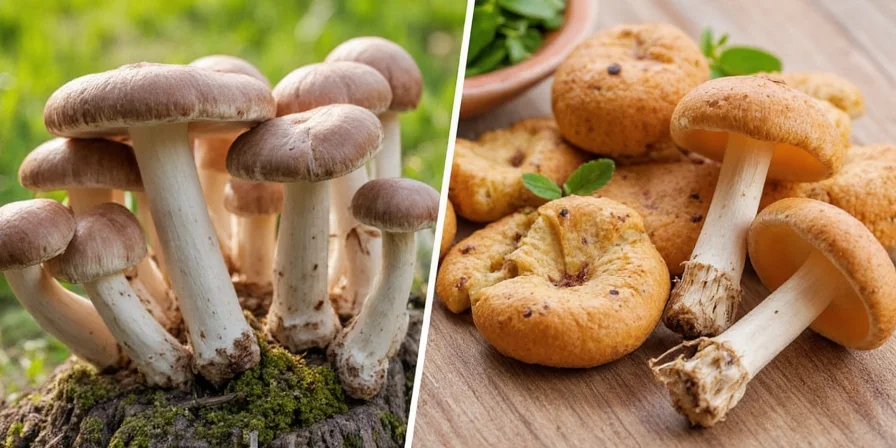
Key Takeaways for Perfect Mushroom-herb Pairings:
- Thyme works with nearly all mushroom varieties
- Add hardy herbs early, delicate herbs at the end
- Rosemary pairs best with meaty mushrooms like portobello
- Sage enhances creamy mushroom dishes significantly
- Never overcrowd mushrooms in the pan for best flavor absorption
What's the single best herb for mushrooms for beginners?
Thyme is the single best herb for beginners because it works well with nearly all mushroom varieties, maintains flavor during cooking, and is difficult to overuse. Add 3-4 sprigs per pound of mushrooms early in the cooking process for best results.
Can I use dried herbs instead of fresh with mushrooms?
Thyme and rosemary work reasonably well dried, but use only one-third the amount of fresh herbs. Most other herbs (parsley, chives, dill, tarragon, sage) are significantly better fresh as they lose delicate flavor compounds when dried. For best results, always use fresh herbs except when thyme or rosemary are the only options available.
Why do my mushrooms always turn out watery when I cook with herbs?
Mushrooms release water when cooked. The key is to cook them in a single layer over medium-high heat without stirring until they begin to brown. Adding herbs while mushrooms are still releasing water traps steam that dilutes flavor. Wait until mushrooms have seared and released their moisture before adding most herbs.
Which herb pairing works best for everyday mushroom dishes?
For everyday cooking with common white button or cremini mushrooms, the thyme-sage combination works best. Use 3-4 thyme sprigs added early in cooking and 4-6 sage leaves fried in butter before adding mushrooms. This creates a balanced flavor that enhances rather than masks the mushroom taste.
How much herb should I use per pound of mushrooms?
For hardy herbs (thyme, rosemary): 3-4 sprigs per pound. For leafy herbs (sage, parsley): 4-6 leaves or 2-3 tablespoons chopped. For delicate herbs (chives, dill, tarragon): 1-2 tablespoons chopped. Always start with less—you can add more but can't remove excess herbs once added.

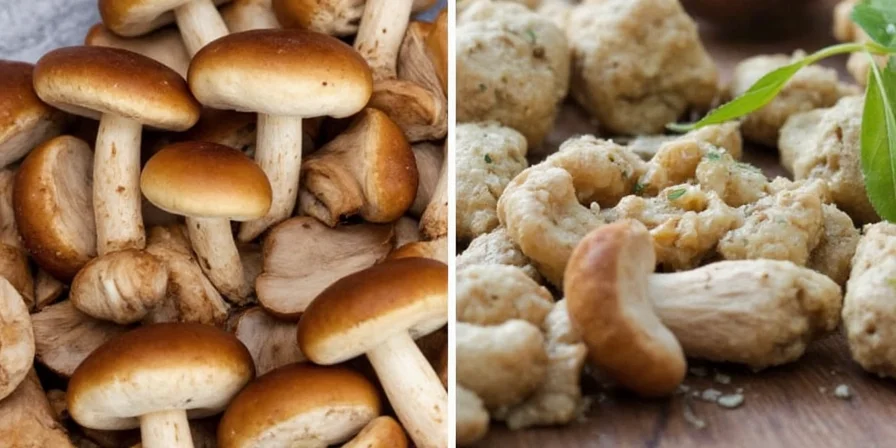









 浙公网安备
33010002000092号
浙公网安备
33010002000092号 浙B2-20120091-4
浙B2-20120091-4